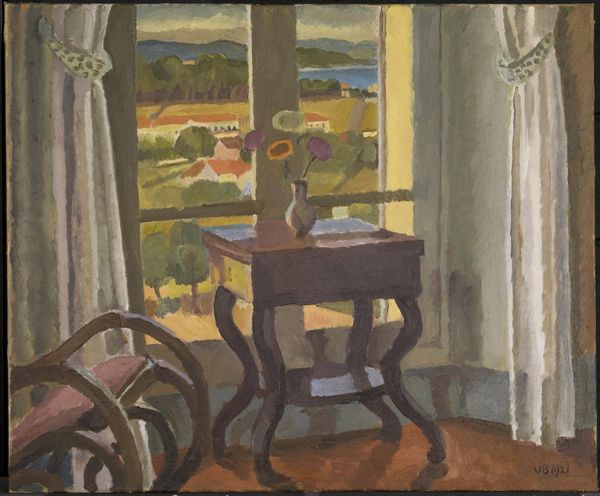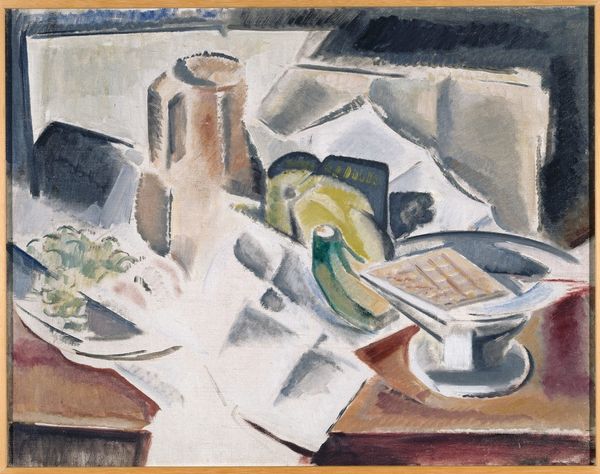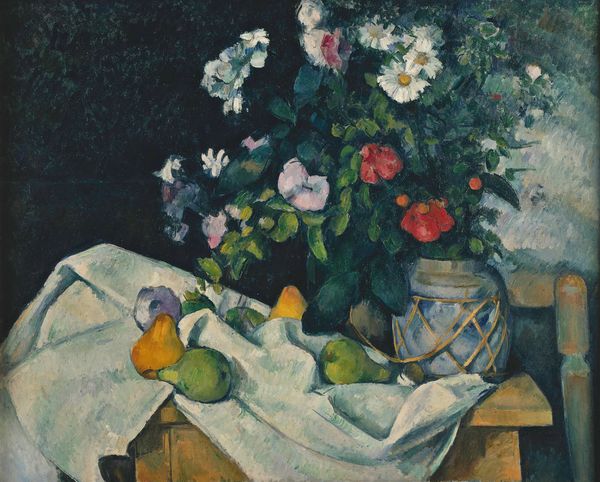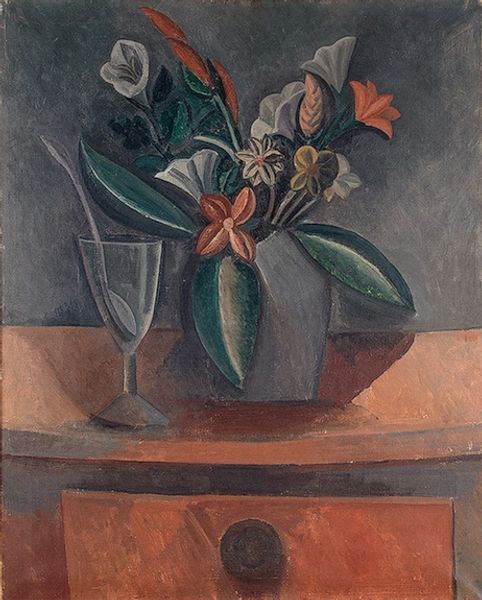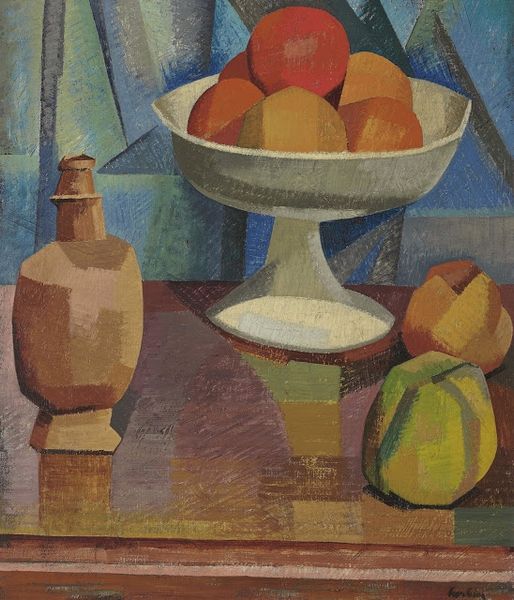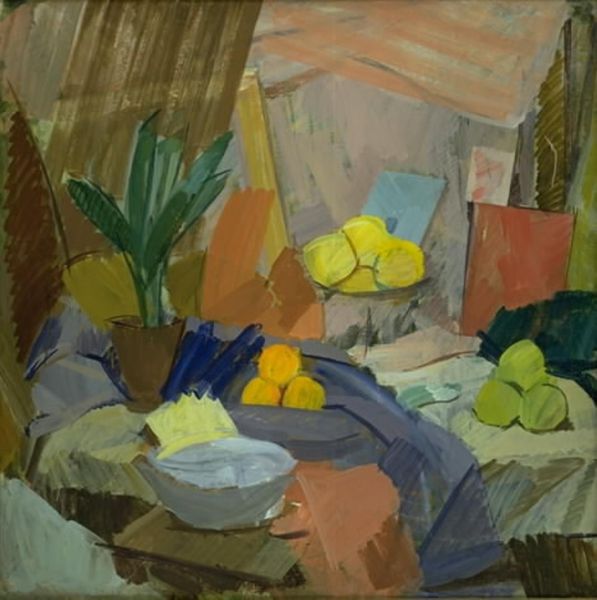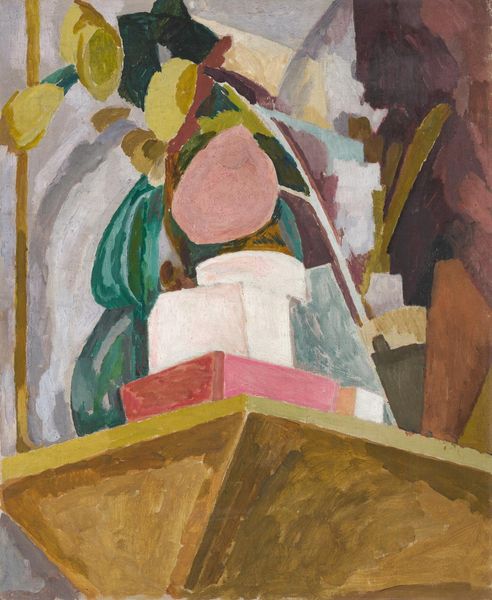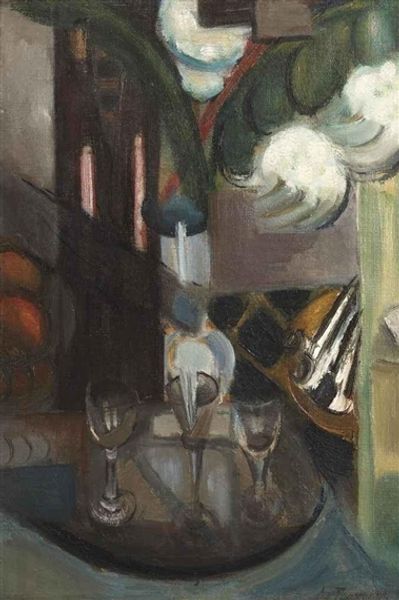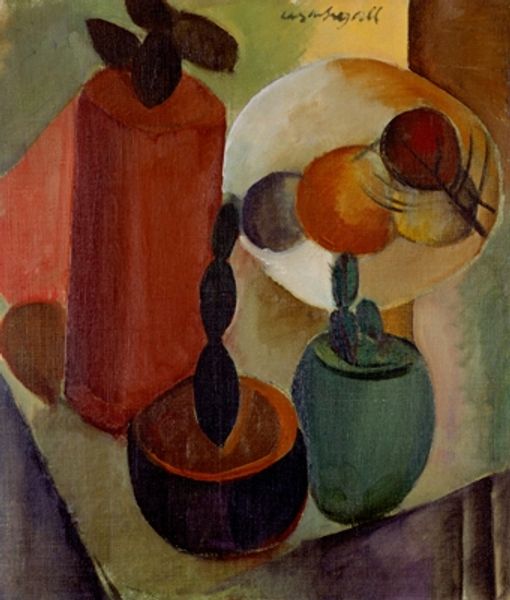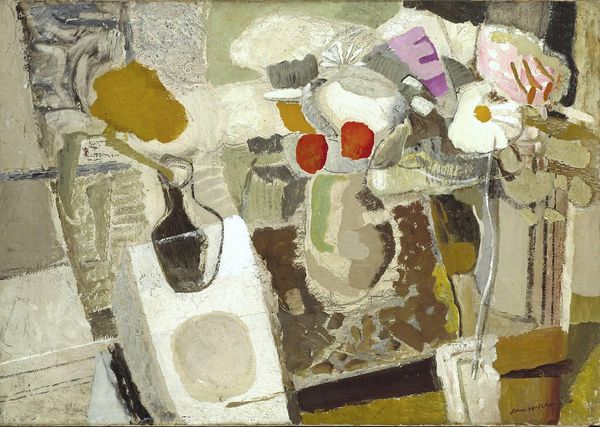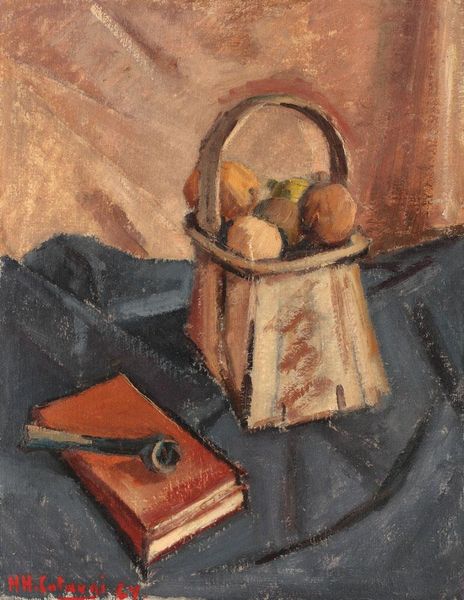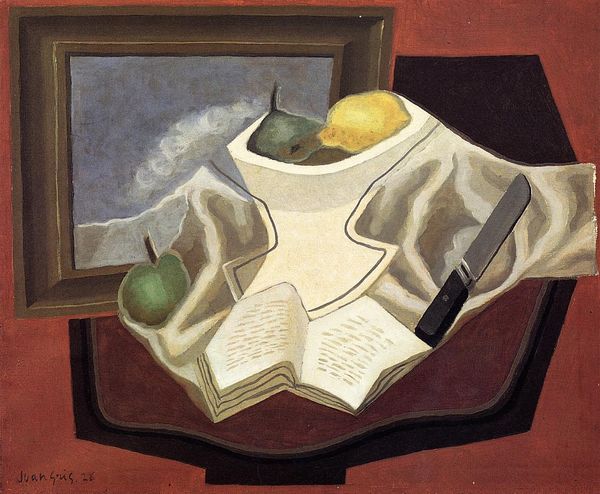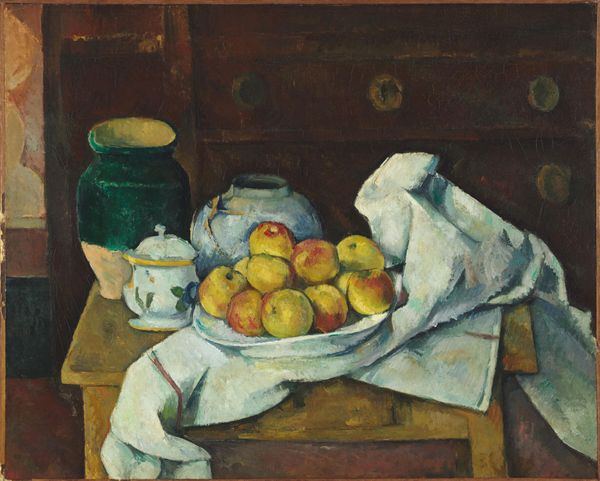
Dimensions: support: 764 x 552 mm
Copyright: © The estate of Mary Potter. All Rights Reserved, DACS 2014 | CC-BY-NC-ND 4.0 DEED, Photo: Tate
Editor: This is Mary Potter's "The Window, Chiswick," painted in oil on canvas. There is a quiet stillness to this painting, emphasized by the carefully arranged objects. What strikes you most about this piece? Curator: It speaks to the interwar period's focus on domesticity. The window frames a specific view, making it a commodity, a picturesque scene. How does this curated view affect our understanding of place and belonging? Editor: That's a good point. I didn't consider how the composition frames the outside world in such a deliberate way. Curator: And what might the presence of the book suggest about leisure, class, and access to knowledge in that historical context? Editor: Now I see the subtle layers embedded in this tranquil scene! Curator: Precisely, art acts as both a reflection and a maker of culture.
Comments
tate 7 months ago
⋮
http://www.tate.org.uk/art/artworks/potter-the-window-chiswick-t05834
Join the conversation
Join millions of artists and users on Artera today and experience the ultimate creative platform.
tate 7 months ago
⋮
Potter was an early member of the Seven and Five Society, a group of artists formed in 1919 whose members included at various times John Piper, Ivon Hitchens and Ben and Winfred Nicholson. Classic Seven and Five work is characterised by clear colours, an interest in light, and a certain freshness and simplicity. Their direct and strong compositions often involved still life, sometimes combined with landscape seen through a window. This is a typical example in which a table-top still life is set against a curtained window looking out onto a view of the river Thames, near Chiswick. The view is from her own sitting-room. Gallery label, August 2004
